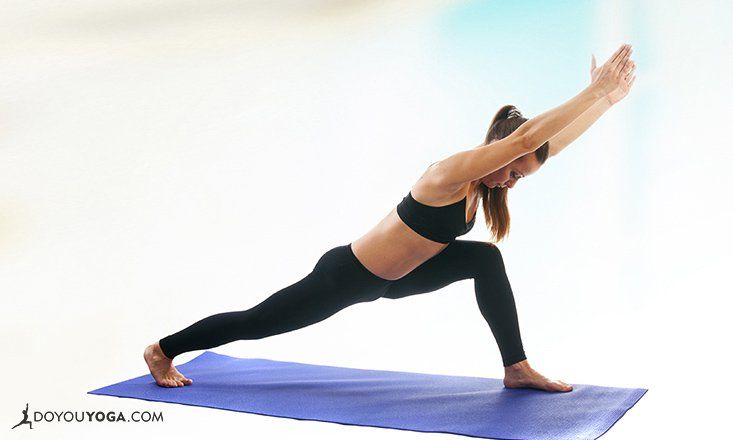Here’s the good news yogis: whether you are practicing yoga for relaxation or to get a physical workout, you are strengthening your relationship with your body. The most important element of any sustainable weight loss journey is learning to enjoy being in your body and listening to your body’s signals.
As you become more familiar with what helps and hurts your body, you will become more discerning about how you consume and burn calories. Therefore, ANY style of yoga (practiced with awareness) will help you achieve this goal.
That being said, a few styles of yoga can decrease weight over a shorter timeframe including Ashtanga, Vinyasa and Hot yoga. Each of these styles is designed to increase your heart rate and circulation, to promote sweating and movement of lymphatic fluid, and finally, to encourage conscious, deep breathing. The combination of these elements is vital to any weight-loss regimen.
Ashtanga Yoga
What to expect: You will be introduced to a primary series of postures when you begin Ashtanga yoga. The poses (and order of poses) of this primary series will not change from class to class, so your body creates muscle memory and you notice changes in your capacity from day to day.
Once you have mastered the primary series, you will be instructed in more postures and sequence options. If your studio designates a “Mysore-style” class, you will be in a classroom with practitioners of all levels who will be performing their own sequences while the teacher observes/offers guidance. It’s important to keep your focus on your own mat.
This style of yoga can feel a bit like a personal obstacle course that you navigate through consistent and dedicated practice.
Main benefits: Builds heat and detoxifies body through coordinated breathing and movement, increases flexibility and circulation through repetition, and cultivates devotion/discipline for a daily practice that prizes body awareness.
Vinyasa Yoga
What to expect: You will be moving continuously from pose to pose throughout the practice and coordinating your movements with your breath. This style of yoga is often called “flow” yoga and derives from the classical Ashtanga practice. There will be more variety in the sequencing (order of the postures) of the class than in Ashtanga classes, and you’ll be practicing the same sequence as the teacher (if practicing online) and/or other students in the room.
Depending on the pace of the class or teacher, you could be moving as quickly as one breath to one movement. This is a style of practice that feels a bit like running a marathon.
Main benefits: Build heat and focus through rapid and continuous movement, increase flexibility and circulation through repetition, and promote deep detoxification on all levels – physical, mental and emotional.
Hot Yoga
What to expect: A hot to REALLY HOT room. Unlike Vinyasa yoga, which can be practiced online, you will need to visit a yoga studio to get this experience. Most hot yoga classes are derivatives of Bikram Yoga—a style that has a set series of 26 postures done in a room heated to between 95–108 °F with added humidity.
Hot yoga allows for variation in postures, sequence of postures, and level of heat in the room. There will be periods of holding the postures and you will be encouraged to stay in the room without leaving or drinking water.
Main benefits: Body heat and flexibility increase without physical exertion by practicing in a hot room. Therefore, greater levels of opening, sweating and detoxification are accessed earlier in this practice. It’s especially important to be aware of your limitations so that you stay hydrated and don’t push beyond your body’s natural range of motion.
Tips for Maximizing Your Experience
Eat no later than 2-3 hours before class. Taking class on a full stomach can result in nausea. Also make sure to drink plenty of water before and after class, but avoid drinking water during class.
Find a studio where you feel comfortable practicing. Aim for a non-competitive atmosphere where the teacher and students empower you to work to your potential and rest when you need to rest. Lastly, find a teacher who has the time to talk to you before or after class if you have questions about your body or about the practice.


